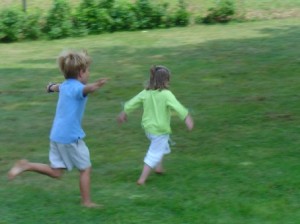 Creating environments that inspire kids to be active is a significant step in fighting childhood obesity. A team of NC State researchers’ study of park use and park-based physical activity among children and adolescents, ages 0 to 18 concludes that parks can play an important role in children’s physical activity because they are generally associated with increased physical activity and are available in urban areas. The study noted that:
Creating environments that inspire kids to be active is a significant step in fighting childhood obesity. A team of NC State researchers’ study of park use and park-based physical activity among children and adolescents, ages 0 to 18 concludes that parks can play an important role in children’s physical activity because they are generally associated with increased physical activity and are available in urban areas. The study noted that:
- Playgrounds were the most common areas for children to play (40.3%), followed by open space areas (14.7%) and picnic areas (11.9%).
- Girls were less likely to be observed in courts and fields, and more likely to be observed in playgrounds.
- Higher physical activity levels increased 3.76 times when other active children were in the park zone.
- Presence of a parent or adult supervisor was associated with a lower likelihood of higher levels of physical activity.
This last point continues to attract interest from parenting publications – most recently a January 2012 USA Today Special – “Ways to Empower Kids To Take Charge of Their Health.
According to the team, more research is needed to better understand both the social and environment characteristics that effect vigorous activity at parks. In addition to its value to parents, the researchers see the study as useful for community and park managers engaged in in park planning and maintenance.
For a more expansive look at the study, see “Park-Based Physical Activity Among Children and Adolescents” in the September 2011 issue of the American Journal of Preventive Medicine.

